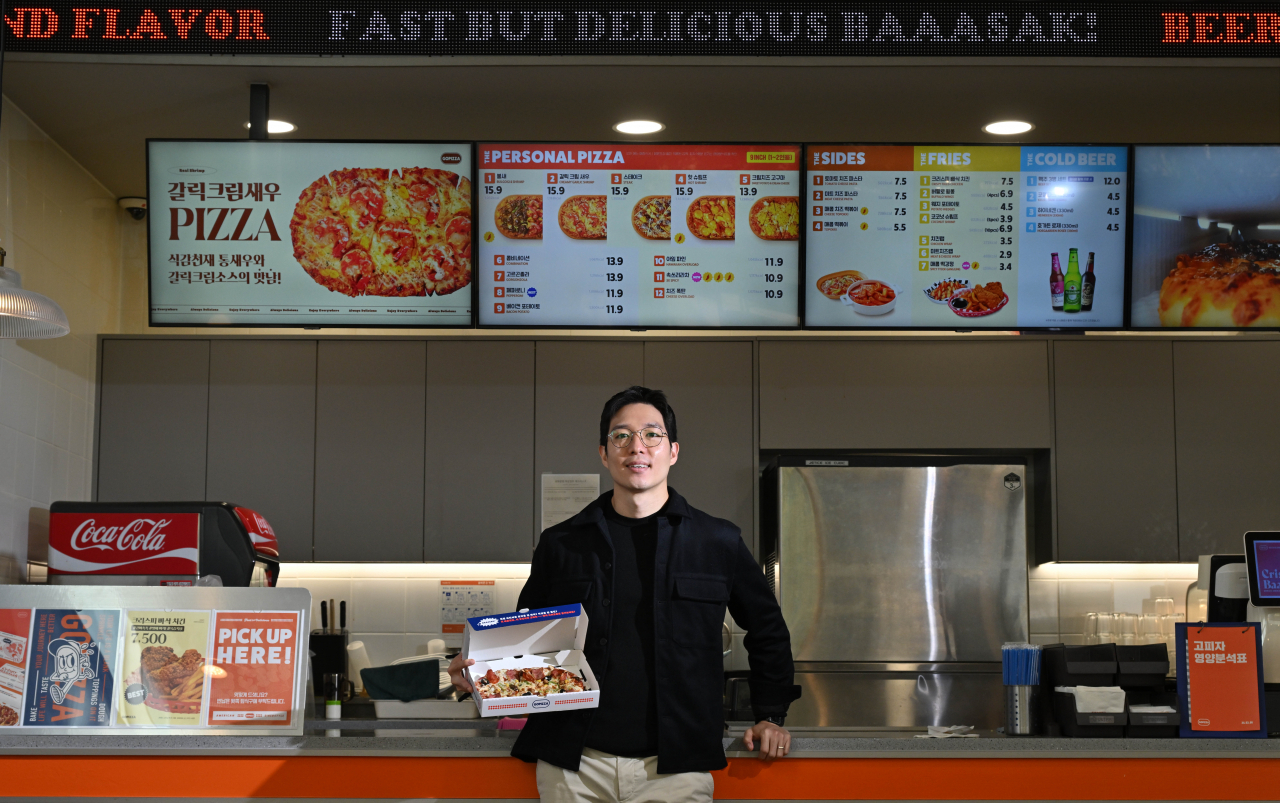
 |
| Gopizza CEO Jay Lim poses in front of the pizza chain's flagship store in Jongno, central Seoul, Monday. (Im Se-jun/The Korea Herald) |
South Korean pizza chain Gopizza is strengthening its foothold in the Indian market by blending food technology with the distinct flavors of Korean cuisine, offering a fresh take on the classic pizza experience.
Founded in 2016 as a single-serving pizza concept aimed at making pizza more accessible, Gopizza entered the Indian market in 2019, tailoring its approach to meet the distinct preferences of Indian consumers.
"We currently operate 60 stores across southern India and plan to expand to 100 locations by next year, with a focus on entering northern cities as well, such as Mumbai and Delhi," Jay Lim, CEO of Gopizza, said during an interview at Gopizza's headquarters in Jongno, central Seoul, Monday. The pizza company has an ambitious long-term goal of operating around 5,000 stores in India, leveraging a mix of direct management and strategic partnerships.
Over the years, Gopizza has expanded to seven countries, including India, Singapore, Thailand and Indonesia, operating over 450 stores. Last year, it sold more than 500,000 pizzas worldwide, achieving some $32 million in revenue. Additionally, Gopizza secured total investments of 600 billion won ($446 million), including 13.6 billion won invested in June by CP All, a major subsidiary of Thailand's leading conglomerate, CP Group.
Gopizza's approach in India differs from its Korean operations. While the brand is known for its robot-assisted pizza-making in Korea, the focus in India is more on brand building and menu adaptation as a"K-pizza brand."
The company has found success by tailoring its menu to local tastes. "In India, about 70 percent of our sales come from vegetarian pizzas. Our bestsellers include the Veggie Paradise, which is essentially a combination pizza without meat, and the Paneer Cheese Pizza," Lim said.
However, what sets Gopizza apart and attracts new customers are its Korean-style pizzas, according to Lim.
"While options like Buldak Chicken Pizza or Gangnam Bulgogi Pizza may not be as profitable as the vegetarian ones, they define our brand's identity. With the rising popularity of K-content, the curiosity surrounding Korean-themed pizzas often goes viral on social media."
 |
| Gopizza CEO Jay Lim poses at the pizza chain's flagship store in Jongno, central Seoul, Monday. (Im Se-jun/The Korea Herald) |
Interestingly, Gopizza has also introduced Korean instant ramyeon to its Indian menu, which has become unexpectedly popular.
"We sell Shin Ramyun in a bowl at around 4,000 won, which is more expensive than our pizzas. But Indian customers are willing to pay for it," Lim noted, highlighting the growing interest in Korean cuisine among Indian consumers.
Capitalizing on this trend, Gopizza plans to launch a new brand called Gochujang in India by the first quarter of next year, focusing on Korean street food.
The company's expansion strategy in India involves a mix of direct operations and partnerships.
While Gopizza currently operates all its stores directly, employing some 300 staff in total, future growth will likely involve partnerships with larger chains and convenience stores.
But Gopizza's appeal in India is not solely about the food — it is also about the overall experience, the CEO explained. The brand has positioned itself as a family-friendly hub, particularly popular with parents and children. "We regularly host birthday parties in our stores. It takes me back to my childhood in Korea when McDonald’s would organize kids’ parties. Those moments create joyful, lasting memories," Lim said.
Looking ahead, Gopizza is set for an even greater presence in India. "Next year, our Indian entity alone is projected to generate over 10 billion won in revenue. With another 100 locations planned, we aim to be recognized as one of the top five pizza brands in India."









